Still using traditional equipment to recover gold from alluvial/ placer gold? It’s time to explore more environmentally friendly solutions! With rising global environmental awareness, traditional placer gold mining methods are facing severe challenges—chemical pollution, soil erosion, and ecological damage are becoming increasingly prominent. Selecting environmentally friendly equipment is no longer simply a moral issue; it has become a necessary investment to ensure mining operations comply with regulations and mitigate legal risks. This article will focus on five core placer gold recovery equipment types: centrifugal concentrators, sluice box, spiral chutes, shaking tables, and jig separators. We will delve into their operating principles, environmental advantages, and applicable scenarios, providing mining companies with equipment selection solutions that balance economic efficiency with environmental sustainability.
The eco-friendly processing equipment in placer gold recovery plants can be combined as needed to achieve efficient and low-energy beneficiation. Centrifugal concentrators achieve a 95%-99% recovery rate for fine-grained gold. Gold chutes are low-cost and suitable for coarse-grained gold placers. Spiral chutes support continuous separation. Shaking tables refine and purify ultrafine gold, achieving high separation accuracy.
Why choose eco-friendly placer gold recovery equipment?
1. Policy Driven
Many countries have explicitly mandated that mining companies reuse tailings water at a rate of at least 90%. Non-compliant companies face fines of up to 50%. However, mines that fail to meet these standards face capacity restrictions or even licence revocation. In this context, companies that rely on high-pollution, high-emission equipment not only face a surge in compliance costs, but are also likely to lose market access due to policy red lines. Environmentally friendly equipment has become a “must-have threshold” for the survival of mining companies.
2. Cost Advantage
Centrifugal concentrators, for example, utilize a closed water circulation system, using only 60% of the water of traditional jigs. More importantly, environmentally friendly equipment reduces tailings discharge by 30%-50%, lowering the construction and maintenance costs of tailings ponds.
3. Efficient Resource Utilization
Centrifugal concentrators achieve a recovery rate of over 95% for ultrafine gold particles, exceeding that of traditional gravity equipment. The multi-layered bed design of the shaking table allows for simultaneous separation of multiple metals, including gold, silver, and tin, increasing overall resource utilization by 40%. This not only reduces resource waste but also aligns with the requirements of a “circular economy.“
5 eco-friendly placer gold recovery equipment
(1) Centrifugal Concentrator
The centrifugal concentrator generates powerful centrifugal force through high-speed rotation, rapidly separating gold particles from gangue minerals in the slurry. Gold particles settle along the inner wall of the cone and are concentrated through the discharge port, while light minerals are discharged with the water flow.
Environmental Highlights:
- Its closed-loop water circulation design ensures extremely low water consumption, making it ideal for water-scarce mining areas, at only 60% of that of traditional shaking tables.
- No chemicals such as cyanide and mercury are added throughout the process, preventing heavy metal contamination.
- After dewatering, the tailings have a moisture content of less than 25%, allowing them to be directly backfilled into the goaf, reducing the footprint of the tailings pond.
Application Scenario
The centrifugal concentrator is a “gold trap” with high recovery rates. It is particularly suitable for processing fine-grained placer gold ores with a mud content of over 30% and high-clay slurries, with a single unit processing capacity of 0.5-60 t/h.
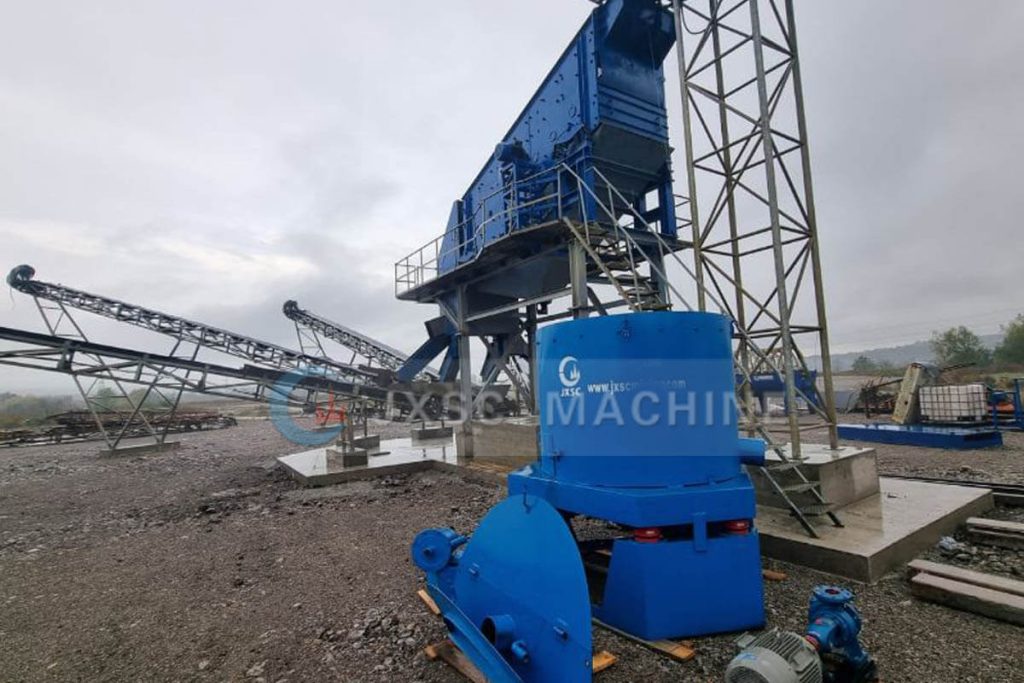
(2) Spiral Chute
A spiral chute uses a rotating flow field along its annular spiral trough surface to separate the slurry into separate layers under the combined effects of gravity and centrifugal force: heavy minerals (gold) settle along the inner side of the trough, while light minerals are discharged along the outer side with the water flow.
Environmental Highlights
- Requires no electricity or power supply; continuous separation is achieved solely by the slurry’s own gravity flow, reducing energy consumption per ton of ore.
- The modular stacking design reduces footprint by 60% compared to traditional linear chutes.
Application Scenario
Spiral chutes are energy-saving pioneers in continuous separation. They are suitable for processing medium-grained placer gold (particle size 0.05-0.5mm) and large-scale production line operations. Their compact structure reduces installation and transportation costs, making them suitable for small and medium-sized mines. They are often used in conjunction with a shaking table for a “roughing-cleaning” system.
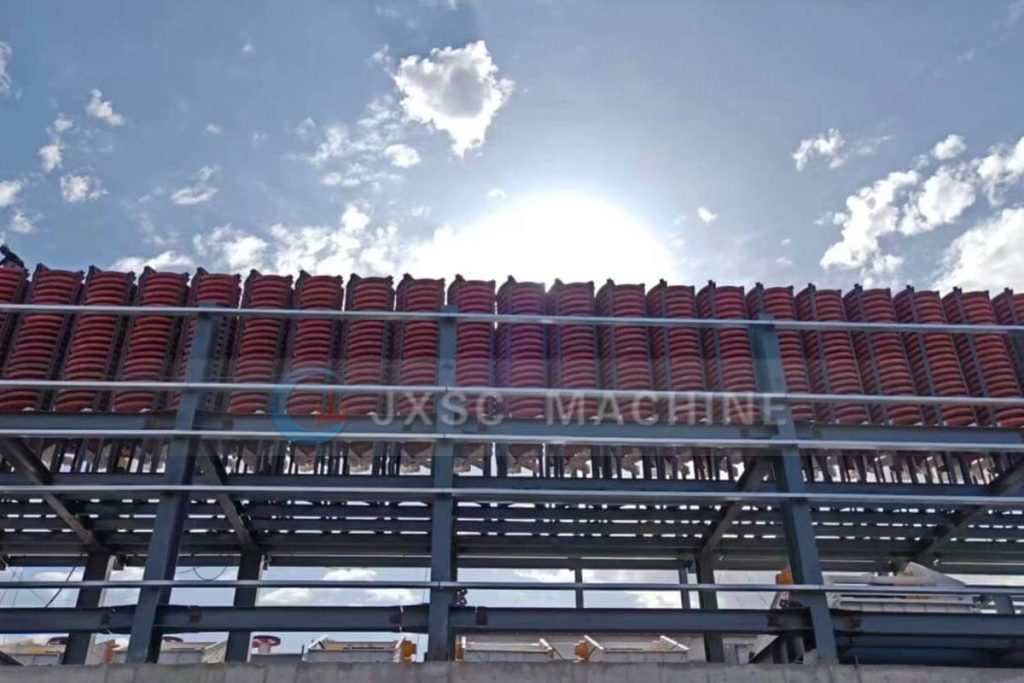
(3) Shaking Table
The shaking table uses a reciprocating bed surface at a frequency of 1.5-3.0 Hz (stroke 8-20 mm) along its longitudinal axis. Combined with horizontal water flow, the shaking table creates a sector-shaped distribution of mineral particles based on density. Gold particles, due to their high density, remain on the concentrate side of the bed, while gangue minerals are discharged from the tailings side with the water flow.
Environmental Highlights
- The multi-layer corrugated bed design can separate colloidal gold particles as small as 0.001 mm, reducing the use of reagents in subsequent chemical purification steps.
- It effectively reduces tailings discharge and can increase concentrate grade to over 80%, significantly reducing the burden of subsequent processing.
Application Scenario
The shaking table is the ultimate re-purification and gravity separation equipment for fine separation. It is primarily used for concentrate purification, such as gold-bearing concentrates separated by centrifugal concentrators and spiral chutes, followed by further separation and upgrading by the shaking table. It is often used in conjunction with a gold chute to achieve an efficient and pollution-free placer gold recovery process.
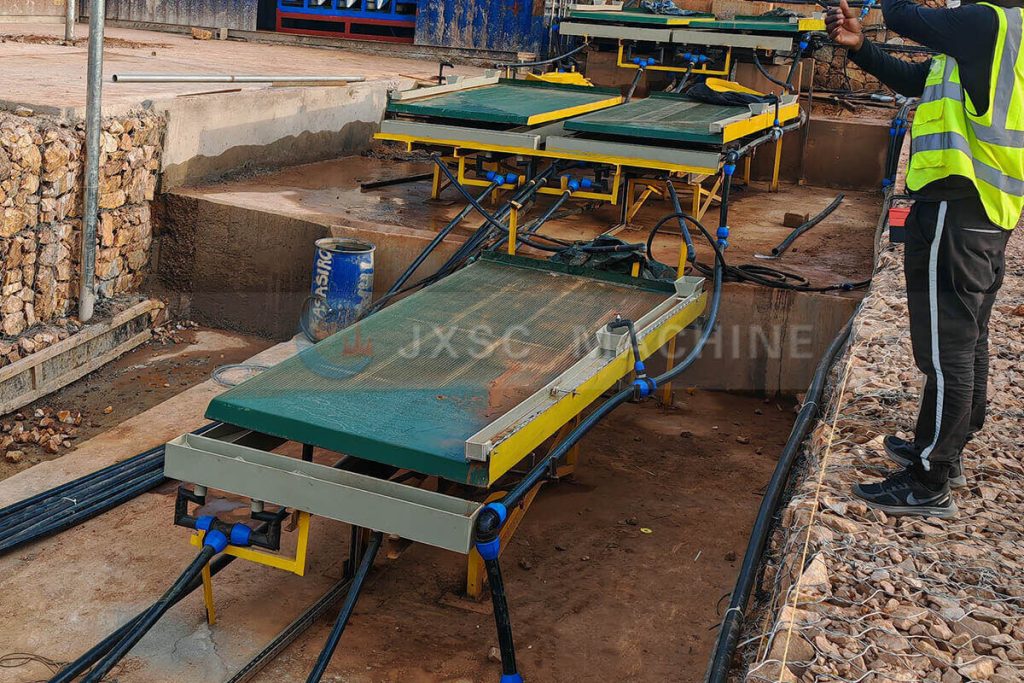
(4) Gold Sluice Box
The gold sluice box uses an inclined angle to create a fluid separation environment. As the slurry flows through the flume, a built-in gold blanket forms a settling zone, capturing gold particles by utilizing the gravity differential. This equipment can also be used in conjunction with other gold processing equipment (such as a shaker) to form a complete chemical-free placer gold recovery plant, further enhancing environmental benefits.
Environmental Highlights
- No motor is required, resulting in a small footprint and easy operation, making it particularly suitable for remote mining areas without power grid coverage.
- The chute is constructed of high-manganese steel or ultra-high molecular weight polyethylene, offering strong wear resistance and a long service life, reducing solid waste generated by equipment replacement.
Application Scenario
The sluice box is a low-cost primary separation tool. It is primarily used for the initial separation of coarse placer gold (particle size 0.1-2mm). It is often used after a trommel screen, shaking table, or rotary scrubber to pre-treat placer gold ore containing slime impurities.
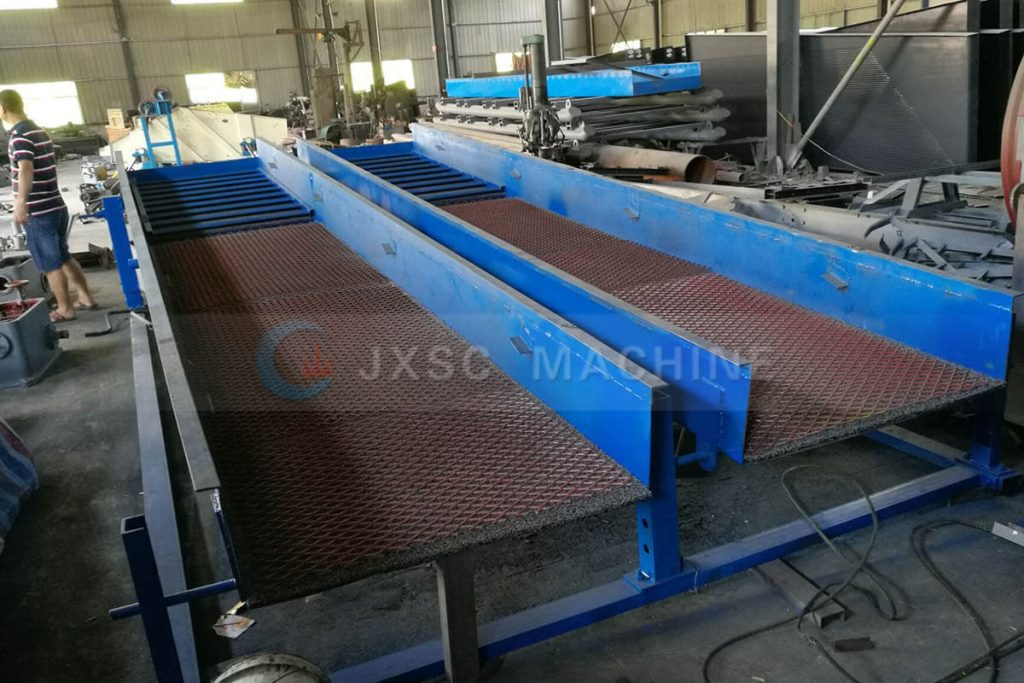
(5) Jig Separator
The jig separator uses an eccentrically driven rubber diaphragm to generate vertical pulsed water flow, cyclically loosening and concentrating the ore layer. Gold particles settle to the concentrate chamber below the screen plate due to gravity, while lighter minerals flow into the tailings system with the rising water.
Environmental Highlights
- A dual-chamber water circulation system achieves an 80% recycling rate for tailings water after treatment in a sedimentation tank, reducing water consumption per ton of ore.
- The screen plate is made of polyurethane elastic material with customizable pore size, capable of directly processing slurries with a 45% mud content, eliminating 30% of the energy consumption of traditional ore washing processes.
Application Scenario
Jig concentrators are highly efficient for heavy mineral separation. They are suitable for separating coarse-grained heavy minerals (gold, tin, manganese, and tungsten), with a processing capacity of 1-25 tons/hour. JXSC also customizes mobile jig plants to form small one-stop portable gold wash plant.
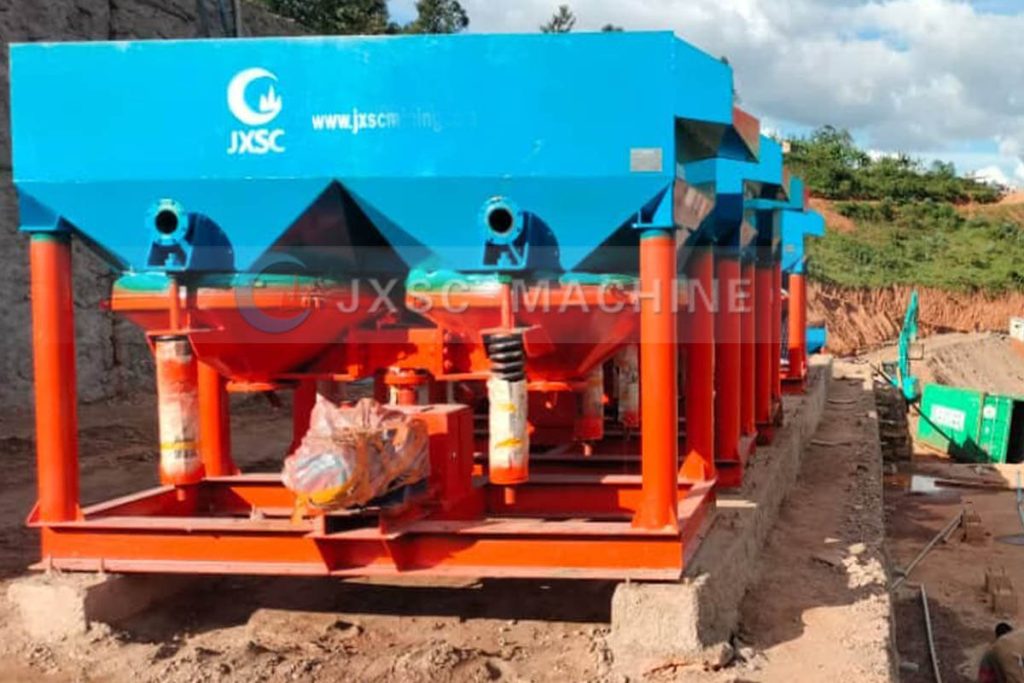
How to choose suitable placer gold recovery equipment?
Scale | Recommended equipment | Core advantages |
Small mines (<10t/h) | Sluice box + Shaking table | Low cost, easy operation, suitable for individual miners. |
Medium mines (10-50t/h) | Drum screen + Centrifugal concentrator + Spiral chute | Balanced efficiency and environmental protection, recovery rate >90%. |
Large mines (>50t/h) | Jig separator + Centrifugal concentrator + Shaking table + Tailings dry discharge system | Fully automated process, zero wastewater discharge. |
The specific equipment combination depends on the core parameter comparison and actual application. Contact us for professional gold processing solutions and quotes!
Placer gold recovery equipment (centrifugal concentrators, gold chutes, spiral chutes, shakers, and jigs) offers high efficiency and low pollution. Through physical separation technology, they reduce reliance on chemicals, lower energy and water consumption, and improve gold recovery rates while also being environmentally friendly. Choosing the right environmentally friendly gold recovery equipment requires a comprehensive assessment of key factors including throughput, mineral properties, energy consumption, and cost. Contact JXSC today to upgrade your gold mine to green mineral processing technology!